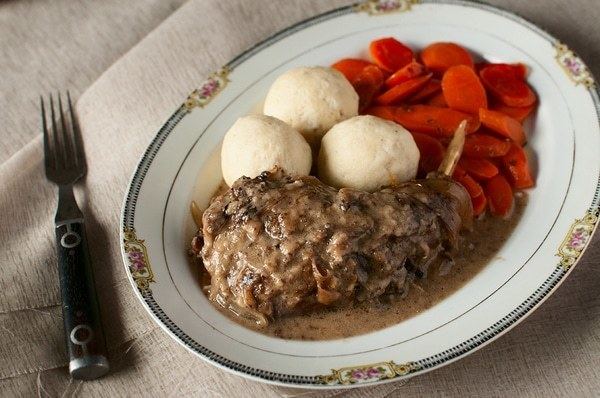 | ||
Similar Sauerbraten, Jugging, Spätzle, Rouladen, Rabbit pie | ||
German wine braised rabbit stew hasenpfeffer
Hasenpfeffer is a traditional German stew made from marinated rabbit or hare, cut into stewing-meat sized pieces and braised with onions and a marinade made from wine and vinegar.
Contents
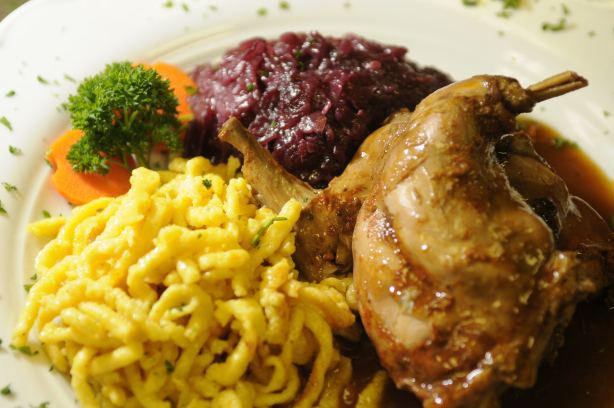
Seasonings make the stew
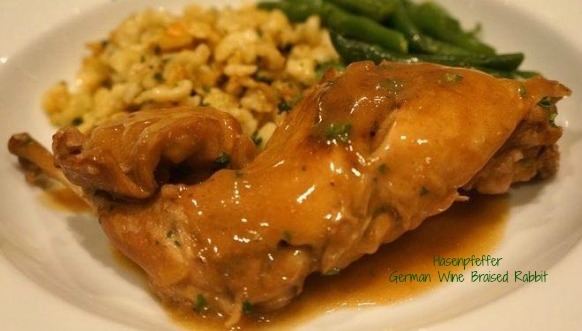
Hase is German for "hare" and Pfeffer is German for "pepper", although the culinary context refers generically to the spices and seasonings in the dish overall, as with the German ginger cookies called pfeffernüsse. Seasonings typically include fresh cracked black pepper or whole peppercorns, along with salt, onions, garlic, lemon, sage, thyme, rosemary, allspice, juniper berries, cloves, and bay leaf.

In Bavaria and Austria, the cuisines of which have been influenced by neighboring Hungarian and Czech culinary traditions, hasenpfeffer can include sweet or hot paprika. In the North American pioneer era, German immigrants frequently cooked squirrels in the same manner.
In popular culture
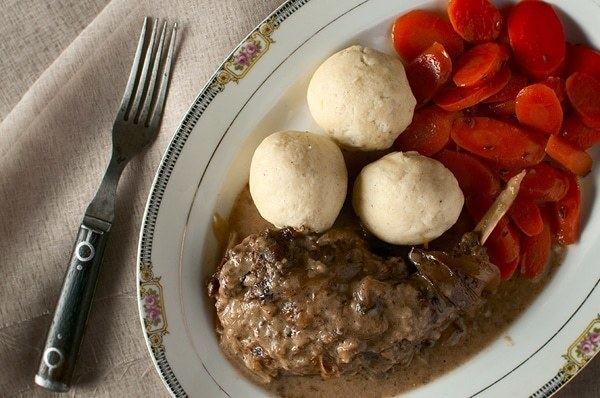
Hasenpfeffer comprises an essential plot device in the 1962 Looney Tunes cartoon Shishkabugs. It's also part of the lyrics of Elvis Presley's song "G.I. Blues" from the 1960 movie of the same name.

In the TV series Laverne & Shirley (1976-1983) the word is used in the opening sequence by the title characters as part of a "Yiddish"-American "hopscotch" chant leading into the opening song.
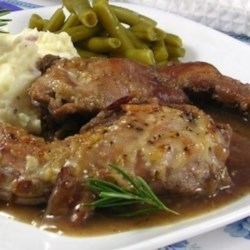
In the film Escape from Sobibor (1987), Jews must raise rabbits in their death camp so that the S.S. who imprison them may indulge in their love for Hasenpfeffer.. This eventually led to the escape of the prisoners through vital information that the rabbit-keeper overheard from the S.S. commander speaking near the hutches. Moreover, the caging of the rabbits is an artistic metaphor for the imprisoning of unresisting humans who are by this film thematically encouraged to become unlike rabbits and resist their captors.
In the film D2: The Mighty Ducks, the Norwegian-born character Jan serves hasenpfeffer and eggs to Gordon Bombay and Charlie Conway. It is referred to as his specialty breakfast.
In the Allen Sherman song "Hungarian Goulash," from the album My Son the Nut (Warner Brothers, 1963), it is one of the dishes mentioned: "ha-sen-pfen-fer {mispronounced} comes from Pennsylvania."
